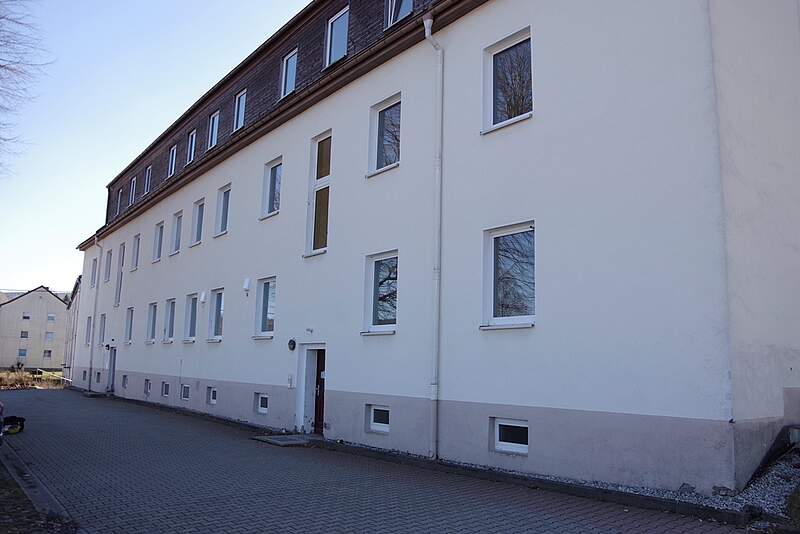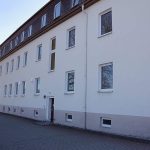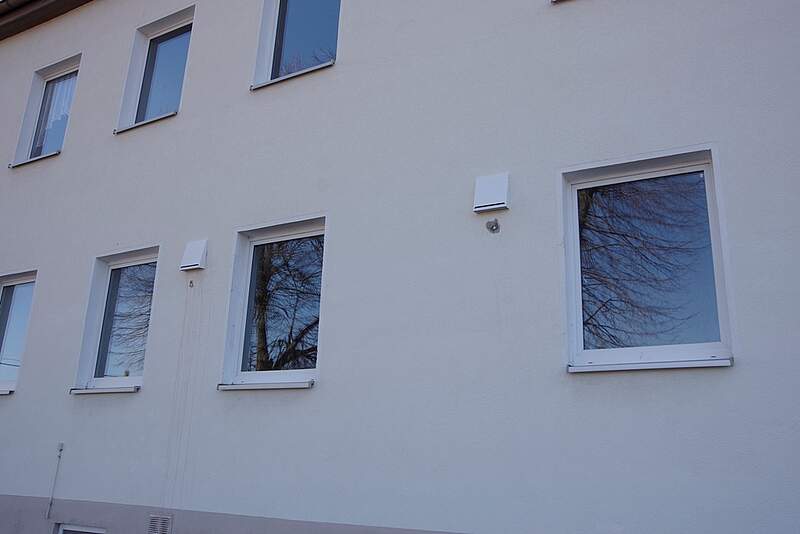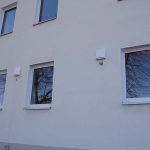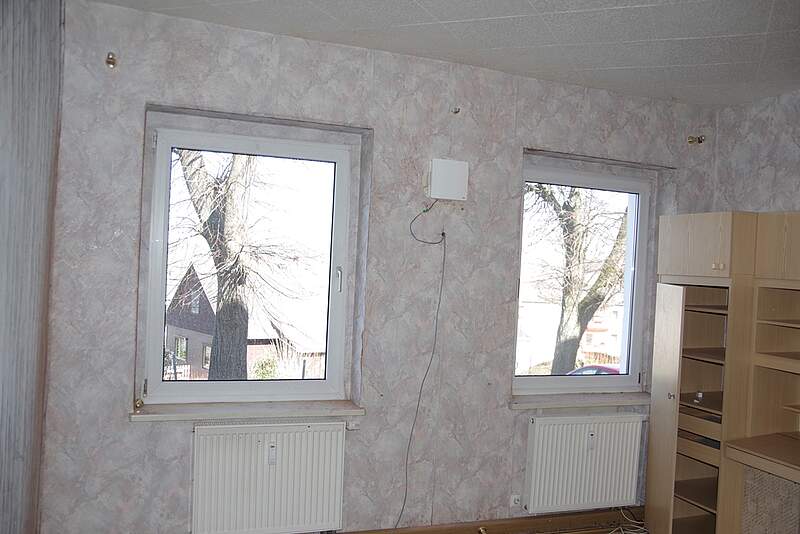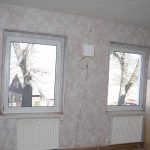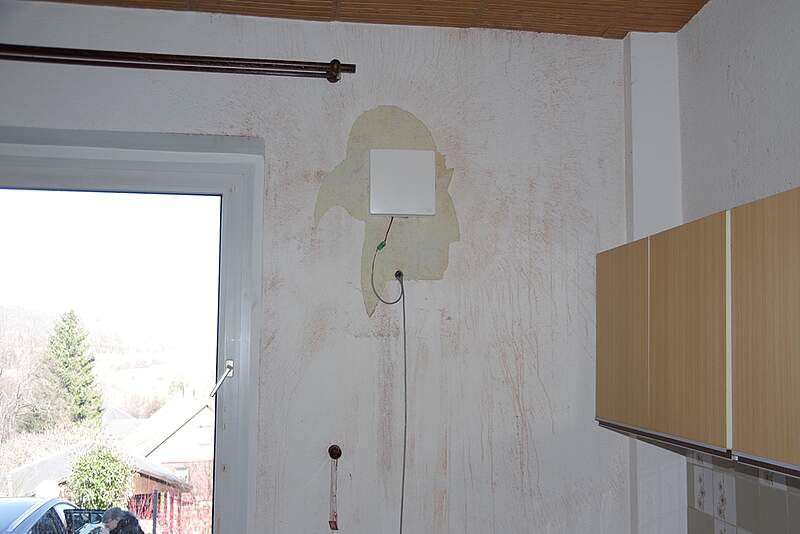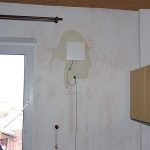Radon protection thanks to ventilation
"RadonVent" research project: Decentralized ventilation lowers the concentration of radon activity indoors
According to the Radiation Protection Act, regulations on protection against radon in buildings with common rooms such as apartments, daycare centers and schools as well as at workplaces will apply in radon prevention areas for the first time from 2020. The radioactive noble gas radon-222 cannot be perceived by humans and can cause lung cancer in the long term. Researchers at inVENTer GmbH, in cooperation with the Helmholtz Center for Environmental Research (UFZ), among others, are investigating the effectiveness of decentralized ventilation systems with heat recovery in reducing the radon activity concentration in the room air. Against this background, the “RadonVent” research project is conducting field tests in an area with increased radon occurrence. In the first preliminary tests using inVENTer ventilation devices, measurement results were obtained that demonstrate a significant reduction in radon-222 in the interior.
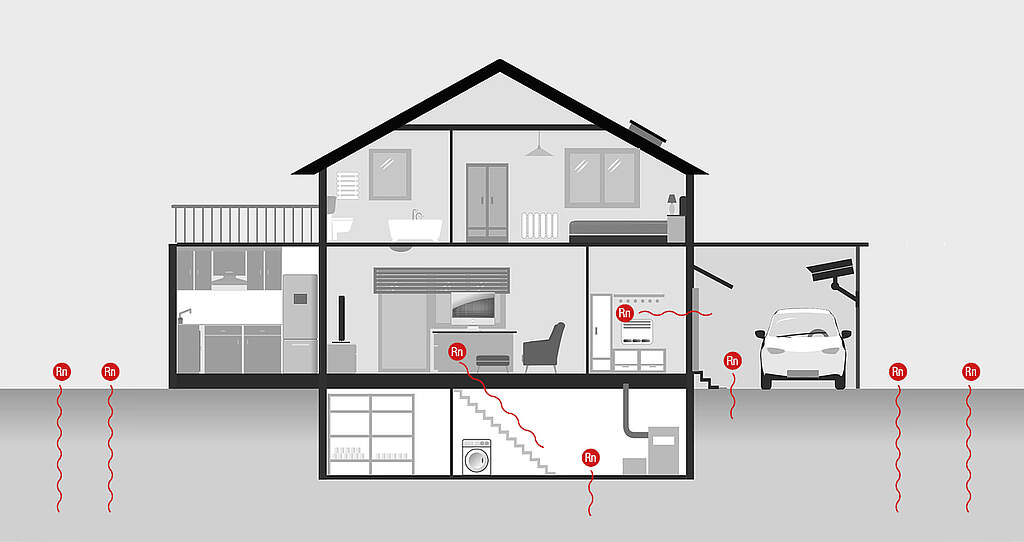
Research project "RadonVent": Many thanks to our partners!
- UFZDepartment Umweltinformatik around Prof. Dr. Holger Weiß
- Bergsicherung Schneeberg GmbH & Co. KG
- Gebäude- und Wohnungsverwaltung GmbH Schlema
- Firma SARAD GmbH
- Dr. Jörg Dehnert from the Saxon State Office for Environment, Agriculture and Geology (LfULG)
Radon protection in Germany
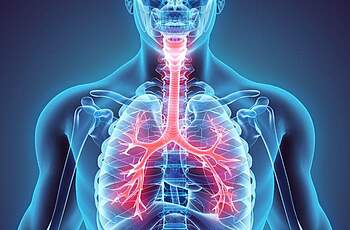
According to the Radiation Protection Act (StrlSchG), according to the Federal Ministry for the Environment, Nature Conservation and Nuclear Safety, by December 31, 2020, all federal states had to identify the areas in which reference values were frequently exceeded in buildings. Said reference value applies nationwide and is 300 Bq / m3 in residential buildings, schools and at workplaces. High radon-222 activity concentrations occur, for example, in the German low mountain ranges and former mining areas in the federal states of Saxony, Thuringia, Bavaria and Baden-Württemberg. Targeted reduction measures must be implemented there to protect residents. Schools and employers are also obliged to check compliance with the reference value and, if necessary, to implement protective measures.
Already knew?
The chemical element radon-222 is a radioactive noble gas and occurs naturally in Germany in different concentrations in the soil. The gas is invisible and cannot be perceived by humans either through the smell or taste. Leaks in the building envelope cause it to enter the living space unnoticed in the area in contact with the ground and can pollute the indoor air. Long-term inhalation of higher concentrations can lead to lung cancer.

Reduce the concentration of radon activity by ventilating and sealing

Reduce the concentration of radon activity by ventilating and sealing
The simplest measure to reduce radon-222 is ventilation. However, continuous ventilation through open windows has the disadvantage that the rooms cool down uncomfortably. Continuous reheating is not only inefficient, but also expensive. Especially in existing buildings or in the case of renovation, decentralized living space ventilation with heat recovery is a simple and efficient measure to enable a continuous exchange of air in order to reduce the concentration of radon-222 activity. Researchers at inVENTer GmbH as a partner in the UFZ Department of Environmental Informatics led by Prof. Dr. Holger Weiß, Bergsicherung Schneeberg GmbH & Co. KG, Building and Housing Management GmbH Schlema, SARAD GmbH and Dr. Jörg Dehnert from the Saxon State Office for Environment, Agriculture and Geology (LfULG) are developing intelligent, sensor-controlled living space ventilation in a joint research project “RadonVent”, which is funded by ZIM. In addition to suitable sensor technology and additional sealing of the building envelope, the core element of the research is the use of decentralized ventilation systems.
Measurement of the occurrence of radon with ventilation systems from inVENTer
The first preliminary tests and measurements have already been carried out in an unused apartment in an area with high levels of radon-222. A significant reduction in the harmful noble gas in the interior was measured here through the use of decentralized ventilation systems such as the iV14-Zero. Until April 2023, an effective, technically mature complete solution for a wide variety of initial situations in the radon prevention areas will be developed in the course of the project in extensive field tests, simulations and calculations.
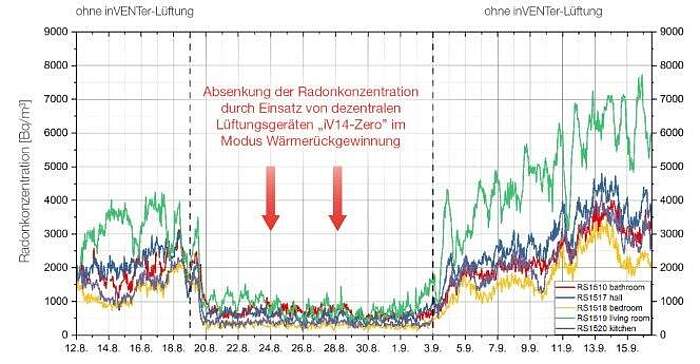
on-site use
The scientists carried out several field tests in an unoccupied experimental apartment in an area contaminated with radon. The first results showed that the decentralized ventilation systems from inVENTer reduced the radon activity concentration in the rooms.
